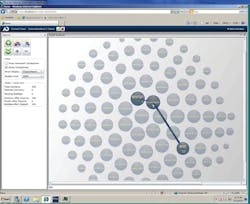The big challenges digital investigators face is the time and effort required to sift through the sheer volume of case data across their devices. They use several third party solutions to handle specific tasks which add greater complexity and resources. AccessData, the leader in incident resolution technology, eliminates some of these challenges with the Forensic Toolkit (FTK) version 5.1 with native forensic investigative capability of Microsoft’s Volume Shadow Copy (VSC). This new platform allows for advanced integration and enhanced visibility into all digital elements and artifacts to ensure that evidence is not missed.
“With the increase in case work caused by the frequency and complexity of digitalinvestigations, forensic examiners need an easy-to-use platform that enables a quicker path to evidence discovery," said Brian Karney, AccessData’s COO & President. “FTK’s VSC support allows investigators to easily identify and quickly examine ‘digital artifacts’ across different points in time, while leveraging all of the advanced features of FTK.”
Digital investigators using FTK can now quickly examine file system snapshots captured by Microsoft’s Volume Shadow Copy (VSC) technology. Unlike other solutions, FTK gives organizations access to VSC without the need for additional time-consuming manual processes or use of third party tools. This translates into a seamless, more efficient evidence-analysis process, thereby speeding the overall investigation.
"Volume Shadow Copies (VSCs) are extremely useful in digital forensics,” said Neil Broom, Laboratory Director of Technical Resource Center, an American Society of Crime Laboratory Directors (ASCLD) Accredited Lab. “Using VSCs, we have successfully proven that spoliations had been attempted on a hard drive through the use of anti-forensics tools (i.e. CCleaner). After CCleaner was run, the hard drive showed no evidence of the proprietary data we were looking for. After examining the VSCs, we were able to recover destroyed Registry files that proved the proprietary data had been accessed on that computer. The VSCs showed a ‘snapshot-in-time’ of when these files were active on the hard drive and when they were deleted.”
In addition to retrieving metadata for deleted files, VSC analysis with FTK provides a system point-in-time history that serves as a chronology of how documents, user activity, programs and other artifacts have changed over time. For example, this could reveal relevant evidence that resided in a document at some point in the past but was intentionally changed and would not be recoverable any other way – a major stumbling block in digital investigations.
Advanced Geolocation Visualization
FTK also includes evidence geomapping, a new data visualization feature, which allows investigators to see on a map the geographic location of evidence items containing geolocation information. This saves valuable time by providing a visual depiction of where digital activities and actions took place (a digital crime scene reconstruction) that may be used as irrefutable evidence in a case.
Other 5.1 features include:
- Deeper integration with AccessData’s Password Recovery Toolkit, industry-leading decryption technology; PRTK. This integration allows users to right-click on an encrypted file and decrypt it on-the-fly. This option keeps investigators’ workflow simple and allows them to spend more time reviewing evidence instead of manually engaging in the file decryption process.
- Improved organization of Internet Explorer 9 Internet artifacts and web page reconstruction. This provides granular groupings of: IE Cache Entries, IE Cookies Entries, IE History Entries, IE Download Entries, and MSIE Recovery Data Entries as well as anintegrated semantic keyword expansion capability to help examiners leverage additional keywords that may be related, specific, general or synonymous, enhancing search scope.
- Support for Microsoft Resilient File System (MS ReFS) found in Windows 8 and Windows Server 2012.






